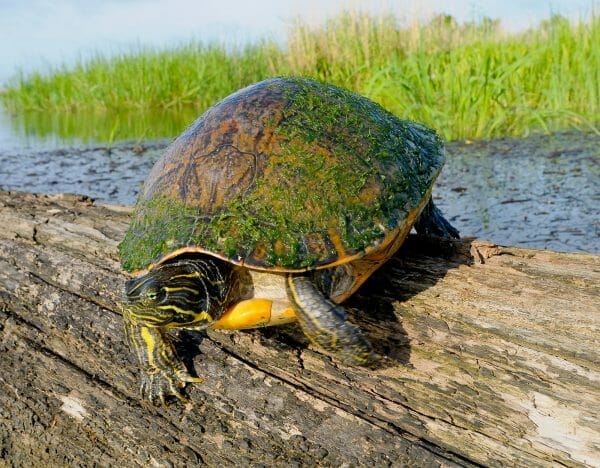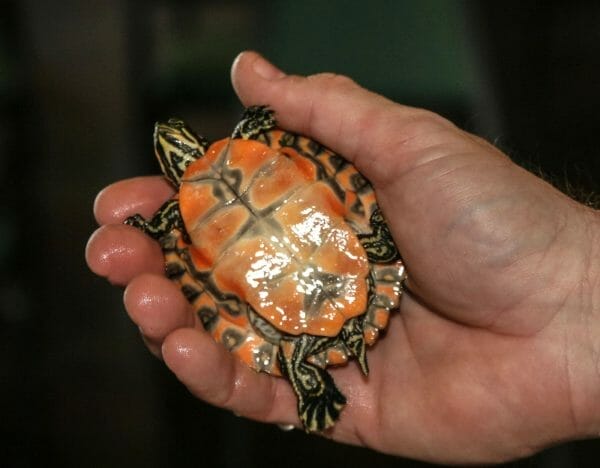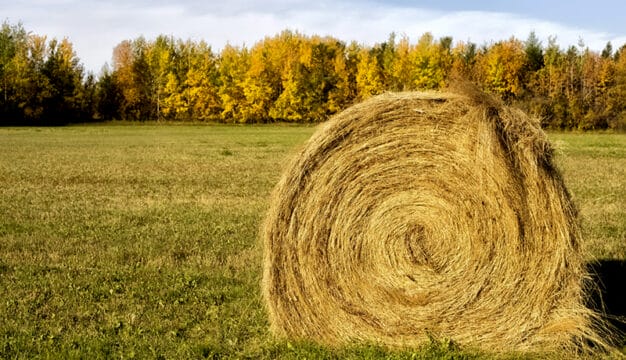Alabama Red-Bellied Turtle
The Alabama red-bellied turtle (Pseudemys alabamensis), also called the red-bellied cooter, was named the Alabama state reptile by the Alabama Legislature in 1990. Found almost exclusively in the Mobile-Tensaw Delta, the turtle is critically endangered because of habitat loss and exploitation by humans.
 Alabama Red-Bellied Turtle
The red-bellied turtle is a member of the Emydidae family, more commonly known as pond or marsh turtles, that contains more than 80 species worldwide. This family includes more common North American species found in Alabama, such as the eastern box turtle (Terrapene carolina carolina) and the painted turtle (Chrysemys picta). The Alabama red-bellied turtle is one of seven “cooter” species of freshwater turtle, with that name deriving from the word for turtle, kuta, brought to the Southeast by enslaved peoples from the West African nation of Mali. When it was designated the state reptile, the Alabama red-bellied turtle was thought to be endemic, meaning found nowhere else in the world. In recent years, however, a population was discovered in the Pascagoula River of southeastern Mississippi.
Alabama Red-Bellied Turtle
The red-bellied turtle is a member of the Emydidae family, more commonly known as pond or marsh turtles, that contains more than 80 species worldwide. This family includes more common North American species found in Alabama, such as the eastern box turtle (Terrapene carolina carolina) and the painted turtle (Chrysemys picta). The Alabama red-bellied turtle is one of seven “cooter” species of freshwater turtle, with that name deriving from the word for turtle, kuta, brought to the Southeast by enslaved peoples from the West African nation of Mali. When it was designated the state reptile, the Alabama red-bellied turtle was thought to be endemic, meaning found nowhere else in the world. In recent years, however, a population was discovered in the Pascagoula River of southeastern Mississippi.
 Juvenile Alabama Red-Bellied Turtle
The Alabama red-bellied turtle is named for the color of its bottom shell, or plastron, which can range from pale yellow to dark red but is most often orange to light red. The upper shell, or carapace, may be greenish to dark brown or black with red, orange, or yellow markings along the sides. The marking and coloration are typically more intense in younger specimens. Yellowish stripes decorate its legs, neck, and head. A unique feature of the species is the notch at the tip of the turtle’s upper jaw. This indentation has a cusp on either side of it, and toothlike projections on the lower jaw fit into these cusps. As with many water turtles, males have elongated claws on their front feet for mating rituals. Mature adults can reach 12 inches (~30 centimeters) or more in length. Females are typically somewhat larger than males, with carapaces reaching 15 inches (~38 centimeters).
Juvenile Alabama Red-Bellied Turtle
The Alabama red-bellied turtle is named for the color of its bottom shell, or plastron, which can range from pale yellow to dark red but is most often orange to light red. The upper shell, or carapace, may be greenish to dark brown or black with red, orange, or yellow markings along the sides. The marking and coloration are typically more intense in younger specimens. Yellowish stripes decorate its legs, neck, and head. A unique feature of the species is the notch at the tip of the turtle’s upper jaw. This indentation has a cusp on either side of it, and toothlike projections on the lower jaw fit into these cusps. As with many water turtles, males have elongated claws on their front feet for mating rituals. Mature adults can reach 12 inches (~30 centimeters) or more in length. Females are typically somewhat larger than males, with carapaces reaching 15 inches (~38 centimeters).
Red-bellied turtles are herbivorous, meaning they eat only vegetable matter, feeding largely on underwater plants. The turtle’s range within Alabama is mostly confined to the Mobile-Tensaw Delta in Mobile and Baldwin Counties. The turtles have also been found in tributaries of the Mobile Bay, Bayou La Batre, Fowl, Dog, Fish, Magnolia, and Bon Secour Rivers and from waters around Daphne and Point Clear. The red-bellied turtle prefers soft sandy bottoms in shallow areas of slow-moving freshwater streams and rivers but can also be found in the more brackish waters of bays and bayous in or adjacent to Mobile Bay. These areas are also abundant in the aquatic plants that form the basis of the turtle’s diet.
 Mobile-Tensaw Delta
Many aspects of the life cycle of the species are poorly understood, and little is currently known about its courtship, mating, and reproductive habits. Females lay their eggs from April to early August, leaving the water to seek dry ground for nesting sites. The female digs a shallow nest in generally sandy soil and deposits between four and nine eggs. Hatchlings usually emerge during the summer, but if the turtles nest in late July, the young may spend all winter underground and emerge the following spring. The lifespan of the Alabama red-bellied turtle is not known at this time, but most turtle species are long-lived, and life spans of over 50 years are normal for healthy individuals in the Emydidae family.
Mobile-Tensaw Delta
Many aspects of the life cycle of the species are poorly understood, and little is currently known about its courtship, mating, and reproductive habits. Females lay their eggs from April to early August, leaving the water to seek dry ground for nesting sites. The female digs a shallow nest in generally sandy soil and deposits between four and nine eggs. Hatchlings usually emerge during the summer, but if the turtles nest in late July, the young may spend all winter underground and emerge the following spring. The lifespan of the Alabama red-bellied turtle is not known at this time, but most turtle species are long-lived, and life spans of over 50 years are normal for healthy individuals in the Emydidae family.
Red-bellied turtle eggs are an important food source for raccoons and fish crows, among other predators in the area, and the young are preyed upon by large fish, shore birds, snakes, and some mammals. Adults have few predators, but alligators are known to feed on them. Humans are among the greatest threats to the Alabama red-bellied turtle. Declining populations of this species have been documented since the 1980s, mostly owing to loss of suitable nesting areas, illegal trapping for the pet trade and even for food, and entrapment in fishing nets and crab pots.
The Alabama red-bellied turtle was placed on the U.S. Fish and Wildlife Service’s Endangered Species List in 1987 and is of the highest conservation concern. It is also protected under the Nongame Species Regulation by the Alabama Department of Conservation and Natural Resources. In 2008, a chain-link fence 3.4 miles (5.5 km) long was constructed by the Alabama Department of Transportation and the Alabama Department of Conservation and Natural Resources along Battleship Parkway, the causeway that separates the Mobile-Tensaw Delta from Mobile Bay. The fence was designed to keep both mating and hatchling turtles from being hit by vehicles while attempting to cross the four lanes of the causeway. In the first year following its construction, recorded deaths dropped 80 percent. The current population is unknown but is speculated to be well below 10,000 individuals and may be as low as 1,000.
Further Reading
- Guyer, Craig, Mark A. Bailey, and Robert H. Mount. Turtles of Alabama. Tuscaloosa: University of Alabama Press, 2015.
- Mirarchi, Ralph E., et al. Alabama Wildlife. Volume Three, Imperiled Amphibians, Reptiles, Birds, and Mammals. Tuscaloosa: University of Alabama Press, 2004.
- U.S. Fish and Wildlife Service. “Endangered and threatened wildlife and plants: determination of endangered status for the Alabama red-bellied turtle.” Federal Register 52 (1987):22939-22943.



